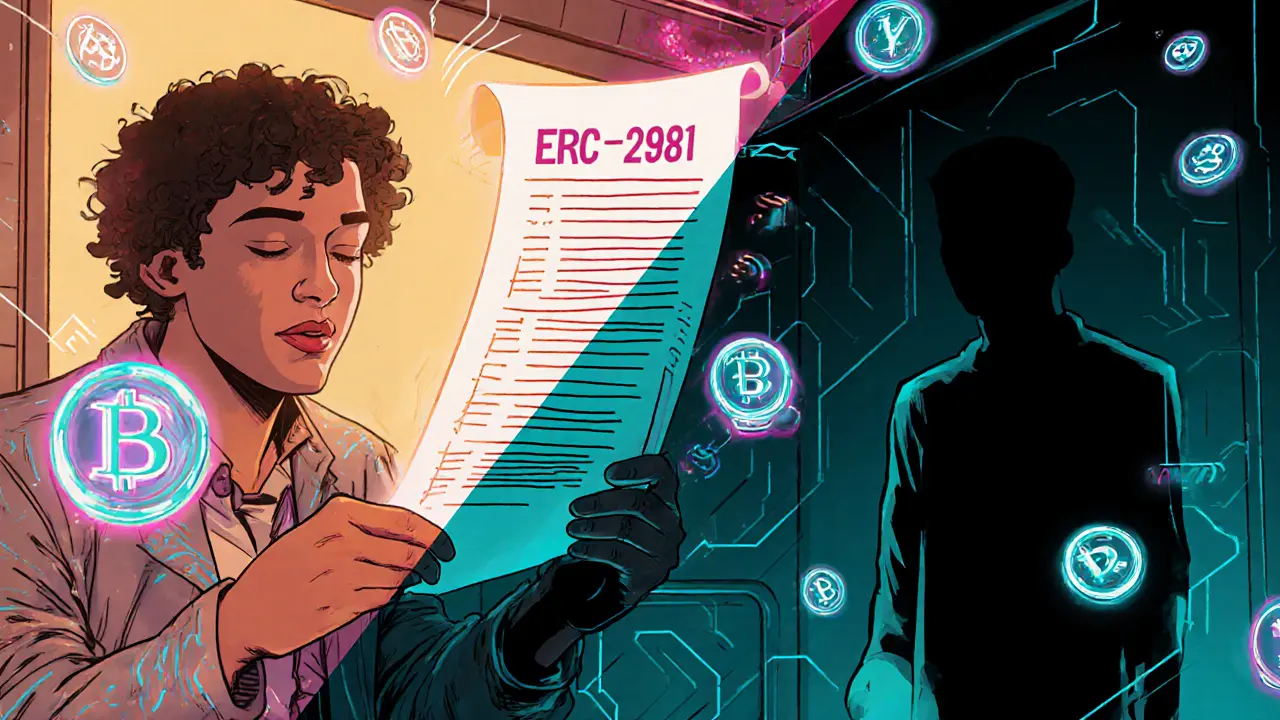ERC-2981: The NFT Royalty Standard You Need to Know
When working with ERC-2981, the Ethereum standard that automates royalty payments for NFTs. Also known as NFT Royalty Standard, it lets creators earn a slice of each resale automatically. This standard ERC-2981 is a set of rules that lives inside a smart contract, code that runs on the blockchain without a middleman. By embedding royalty info directly in the token contract, the protocol ensures that whenever a NFT, a unique digital asset stored on a blockchain changes hands, the royalty percentage is read and sent to the creator’s wallet. In short, ERC-2981 ↳ defines royalty payments for NFTs, and the blockchain ↳ enforces them without extra layers.
How the Standard Connects Creators, Marketplaces, and Buyers
The magic happens at the intersection of three entities: the creator, the marketplace, and the buyer. A creator sets a royalty rate—usually 5‑10%—when they mint the NFT. The marketplace (like OpenSea or Rarible) reads the royalty data from the token’s smart contract and automatically splits the sale proceeds. Buyers don’t notice any extra steps; the royalty is deducted before the final transfer. This workflow requires that the marketplace supports ERC-2981, which most major platforms now do. As a result, the standard enables consistent royalty enforcement across dozens of independent exchanges.
Because the royalty logic lives on‑chain, it’s transparent and tamper‑proof. Anyone can verify the royalty percentage by inspecting the contract code, and the same rule applies on every secondary market. This consistency reduces disputes and gives creators confidence that their work will keep earning even after the first sale. At the same time, developers benefit from a single, well‑documented interface instead of building custom royalty mechanisms for each project.
Adoption isn’t universal yet. Some legacy contracts still use older royalty schemes, and a few niche marketplaces ignore ERC-2981 to avoid paying fees. However, the trend is clear: more new collections are adopting the standard, and major platforms are updating their APIs to read royalty data automatically. This shift drives higher royalty compliance and pushes the broader ecosystem toward a creator‑first model.
Below you’ll find a curated set of articles that dive deeper into ERC-2981’s technical details, explore real‑world use cases, compare marketplace implementations, and offer practical tips for integrating the standard into your own NFT projects. Whether you’re a creator, developer, or collector, the posts ahead give you the insight you need to navigate royalty payments in today’s fast‑moving crypto art world.
Explore why NFT royalties get bypassed, how marketplaces and smart contracts enable circumvention, and what new standards like ERC721‑C and Hedera offer for creators.

